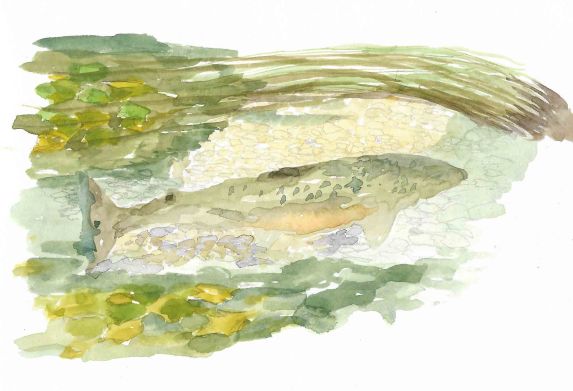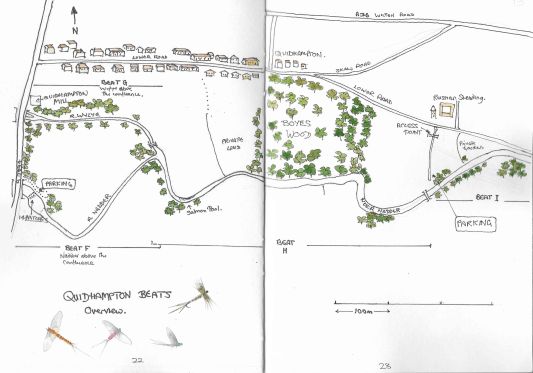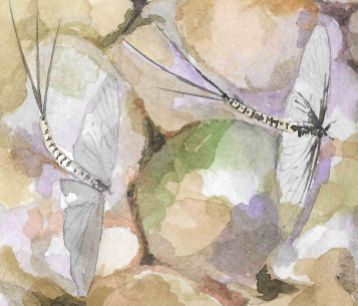
Leckford Estate was the home of John Lewis who founded the Department Store chain. The Estate is still maintained by the partnership and, as well as being a large and important farm, has various leisure facilities which it offers to partners and occasionally to outsiders like me. It also owns about 11 miles of fishing on the River Test in a valley bottom full of wet pasture and willow carr, This is a glorious example of a chalk stream eco-system; some of the pasture has NEVER been ploughed, the botany, bird and invertebrate life is of national importance.
I have visited it many times over the last 25years and often spent most of the day sketching and painting its wildlife. I showed a book of sketches, and the maps that I did or the Wylye Flyfishing club to the head keeper at Leckford last summer, and as a result was asked to use my ideas as an artist to promote the ethos of the estate.
I have recently completed a hand drawn map of the river bottom for the Fishing club, showing members and guests where they are permitted to go. It is also created to convey the value the estate places on their custodianship of such a precious resource. A version of it will be made that can be sold to the many visitors to Longstock Park Nursery and farm shop, which is also part of the estate.






